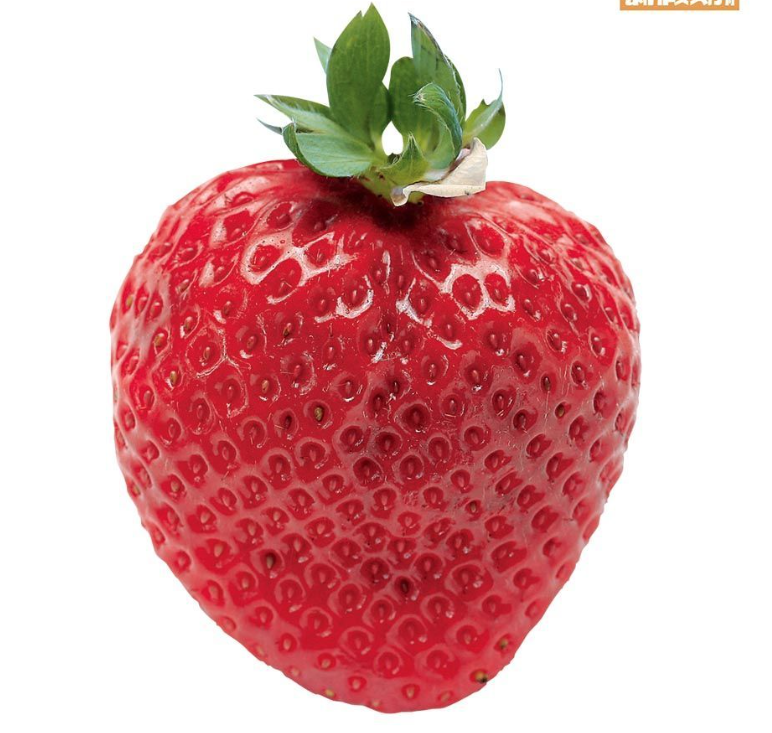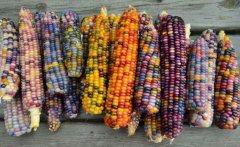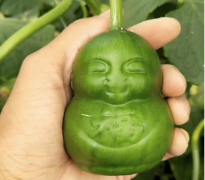It turns out that strawberries can be called strawberries. Strawberries can be grown with organic and inorganic fertilizers.
Strawberry is also called strawberry. Plant height is low, planting period this leaf 8 above, strawberry potted planting method is also relatively simple. It blooms late winter to spring. White. It can be planted in the open, potted and eaten.
Propagation and Culture
The growth temperature of Shiduo pear is about 15 - 25 degrees Celsius. It is warm and warm. It is best to plant it in a small greenhouse.
The best way to grow strawberries is, of course, by dividing them. During the planting period, plants will grow horizontally on the ground for asexual reproduction, called stolons (Stolons), also known as buds and roots (Runners), and roots will grow wherever the nodes touch. The vigorous rooted stolons are cut off from spontaneous buds with a knife and planted in moist soil. Since plants will continue to grow stolons, avoid stolons touching mud if you don't want them to be messy. Method Cover the soil surface with straw or bark, or even with adhesive tape.
It is best to choose the best time to divide and transplant in the sunny morning, the first watering after dividing and transplanting should be "watered"(poured into the bottom hole), and the first one to two days should be placed in a shade with reflected sunlight to avoid direct sunlight. Keep the soil moist and a stand-alone strawberry will grow. Fertilization should not be allowed until two weeks after plant division and transplantation.
When planting from seeds, spread the seeds evenly over moist soil. The soil should be kept moist, the seeds should germinate in light, and should not be covered. The optimum temperature for seed germination is about 20 - 25 ℃. The germination rate is usually only about 50%, and the germination rate will further decrease due to moisture, fertilizer, soil, climate and other factors. Therefore, it is best to sow more than 5 seeds per pot at a time. The seeds germinate in about 15 - 20 days, and when the leaves are 4 - 5 pieces, they can be transplanted into the connecting seedling pot.
soil
Culturing soil can be fine peat soil, fine snake sawdust, or sandy loam soil.
At planting stage, soil can be prepared with well-drained loam soil mixed with 5:1 organic matter. 10 parts soil mixed with 1 part medium fine charcoal can also be added to increase drainage and increase organic matter.
charcoal
Charcoal dust has antibacterial effect, charcoal dust high permeability can also attract soil excess fertilizer and pesticides. Charcoal chips also improve the pH of the soil. This slightly alkaline charcoal is very suitable for the growth of microorganisms and probiotics in the soil. In addition to mixing soil, it can also be placed at the bottom of the basin to prevent soil loss during watering.
Water (Irrigation)
In addition to the leaves, the roots of plants also need to breathe. The soil itself is permeable, but with each watering, the oxygen in the soil will be squeezed out. If the long-term water content of the soil is large, it will affect the oxygen content in the soil, resulting in poor root respiration and root rot, so it is best to keep the root ventilated. However, long-term irrigation will also cause root dehydration and dry death. Therefore, it is necessary to do dry and wet, dry and wet, and avoid ponding under the basin. Water accumulation not only affects the respiration of roots, but also facilitates mosquito breeding. Summer also pay attention not to let rainstorm shower, avoid soaking rotten roots. Spring and autumn watering should be reduced, winter dormancy watering should be strictly controlled, so that the pot soil is not dry, such as pot soil often wet, low temperature, will also cause root rot.
Not all plants need watering every day. It depends on the variety, size and health of the plant. The general principle is "when it is dry, pour it; when it is not dry, pour it thoroughly." Dry means the surface of the basin is dry, but moisture can still be seen when the topsoil is uncovered."Poured through" means pouring water into the bottom hole. The watering cycle is determined by the soil moisture cycle. The more dense the dry-wet cycle of a plant, the healthier and stronger the plant; the more sparse the dry-wet cycle of a plant, the lower the transport capacity of the plant roots.
In addition to the principle of not watering, water temperature, water quality and watering amount also need to be paid attention to. Water temperature must not be too different from the soil temperature, if poured cold water in the hot sun, plants immediately produce "physiological drought", leaves scorched withered. It is best to choose the appropriate time to water in the morning and evening, or to adjust the water temperature. The water used for watering can be rainwater, tea water, rice washing water, fish farming water, etc. Tap water is best stored for two days before use. In case of drought and dehydration, branches and leaves wither, move to shade first, add less water in the basin, spray a small amount of water on leaves, wait for stems and leaves to stand up, and then irrigate thoroughly.
Fertilization
Apart from sunlight and moisture, soil nutrition is also an important part of plant growth. Therefore, regular fertilization is needed to replenish soil nutrients. The main components of fertilizer are nitrogen, potassium and phosphorus. Nitrogen is needed for leaf and stem growth, phosphorus for flower and fruit growth, and potassium for root growth. Other elements such as calcium and magnesium are also essential. And fertilization methods are divided into base fertilizer, topdressing, liquid fertilizer three kinds. Base fertilizer: added to the soil, best used during plant development; top fertilizer: sprinkled along the soil surface; liquid fertilizer: diluted with water for irrigation. 20-20-20 of the fertilizers sold in the market refer to 20% nitrogen, 20% phosphorus, 20% potassium, and so on, which can be purchased according to the type of fertilizer you need.
As for the principle of fertilization, it is "apply sufficient base fertilizer, apply early and frequent thin fertilizer". Fertilization time is selected in the morning when the weather is clear, and fertilization can be once a week, but the fertilizer concentration should be low. Too high a fertilizer concentration will burn the roots of plants, affecting their ability to transport, leading to plant depletion and wither.
Organic Fertilizer
Organic fertilizer can use peanut bran or bone meal, etc. To use peanut bran, soak it in water at a ratio of 1:20 for 3 days (do not exceed 3 days, otherwise it will smell and breed bacterial pests). Do not water on the day of fertilization until the soil is dry. After each watering, the organic matter will gradually decompose and will not smell. Do not apply organic fertilizer in humid season to avoid odor caused by fertilizer fermentation. Since decomposition of organic matter will lower the pH of the soil and if the soil is too acidic, it will burn the roots of plants. Therefore, please remember the principle of "apply fertilizer sparingly". In addition to the charcoal chips discussed earlier, lime is often used to neutralize the acidity of the soil.
Inorganic Fertilizer (Chemical Fertilizer)
Growth period can be applied inorganic fertilizer such as "green leaf essence," flowering period can be applied "flowering essence" and other fertilizers. The concentration of inorganic liquid fertilizer used is generally 1:1000, and its concentration limit is 1:500. The brand of fertilizer can use the "Bida" brand. Of course, if chemical fertilizer is used, the fruit is still limited to ornamental use.
pest
The disease can be controlled by Puccinella sp., Yili, Mancozeb, etc. Pests can be put out (fenitrothion) or all-purpose control. Red spider can be used to control large gram full (Kelthane). The ratio of pesticides is generally 1:1500, whether it is fertilizer or spraying pesticides, if the concentration is too high, it will burn the roots. It is important to note that if pesticides are used, it is better to limit the fruit to ornamental use.
In addition to pesticides, high-purity copper can also be used in mud or in the bottom of the basin; when watered or rained, the pure copper in the soil will decompose ions, which will inhibit the growth of bacteria and pests.

- Prev

Can you eat glass jewel corn? What are the characteristics of glass gemstone corn produced?
Is corn corn? In some places, it is called that, in the process of planting corn, the fertilizer of corn is very important. Some people say that gem corn is the most beautiful vegetable in the history of mankind, also known as glass jewel corn, it is not only beautiful in appearance
- Next

What shape is the cucumber? How is the cucumber of ginseng fruit grown?
Cucumber is a kind of fruit that we all know, and the planting technology of cucumber is relatively simple. The color of the fruit is oil green or emerald green, with soft thorns on the surface. The shape of the fruit is oblong, round or cylindrical. Have you ever seen ginseng fruit and cucumber? two hundred and one
Related
- The first cup of black tea in spring, the flavor and history of tea gardens in Kenya, Africa
- The computer can not only choose potatoes, but also grow tea rice. AI will grow winter oolong tea champion.
- It is not only the inflated tea bitten by insects, but also engraved with the four seasons tea in Beipu.
- The Oriental Beauty Tea Festival in Zhuxian County takes the stage at the weekend to experience the plus-size feast of oil tea.
- & quot; Oriental Beauty Tea & Exploration of Emei in Hsinchu, the hometown of quot;
- The new variety of strawberry "Tainong 1" dessert is the first choice with mellow aroma. Crimson gorgeous
- History of Tea in Taiwan: from Wild Inner Mountain to Export Tea Garden
- Two types of Taiwan Oriental Beauty Black Tea won the British three-Star Award for Childhood Tea Xiang Zhang Jiaqi changed from pilot to champion tea maker.
- Banana species and varieties: the planting history of Taiwan Xianren banana and dwarf banana is long, is banana disease resistant?
- Coffee planting Technology: Qianjie Coffee from Seedling to harvesting

